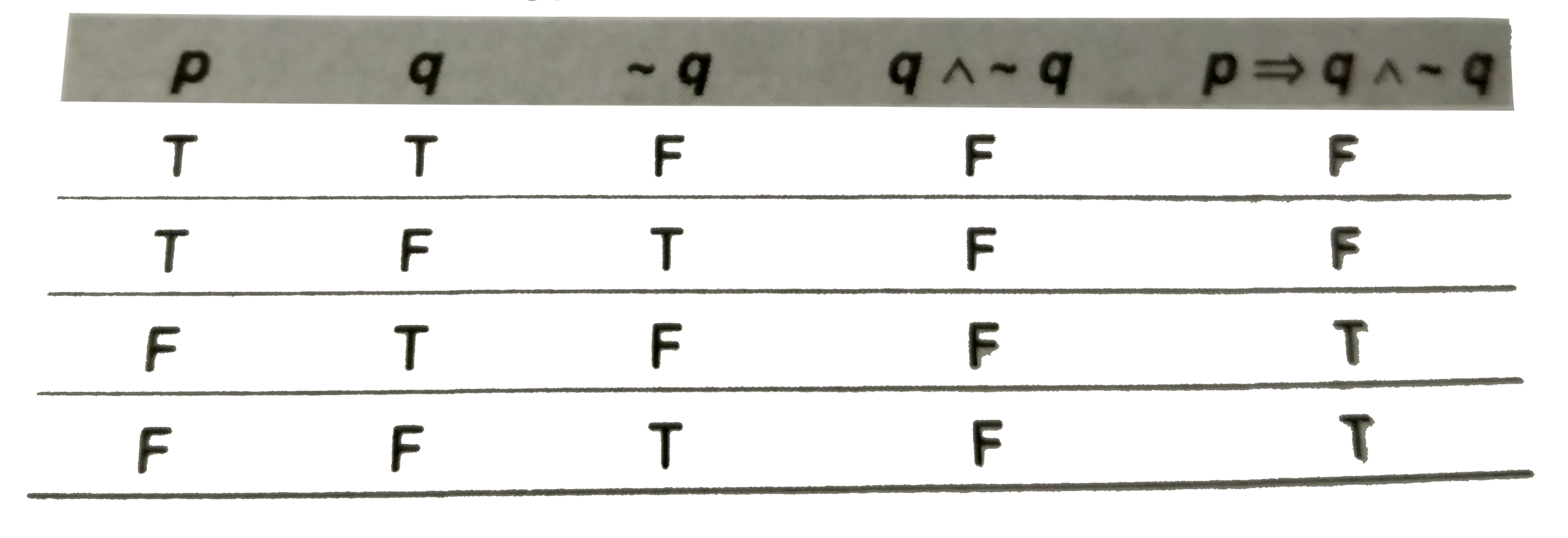If p and q are two stastements, then stastement p⇒p∧~q is a
A
tautology
B
contradiction
C
Neither tautology nor contradiction
D
None of the above
Video Solution
Text Solution
The correct Answer is:C

Hence, it is neither tautology nor contradiction.
|
Updated on:21/07/2023
Topper's Solved these Questions
- BOOK - MHTCET PREVIOUS YEAR PAPERS AND PRACTICE PAPERSCHAPTER - MATHEMATICAL LOGIC EXERCISE - PRACTICE EXERCISE (Exercies 2 (MISCELLANEOUS PROBLEMS))26videos
MATHEMATICAL LOGIC
- BOOK - MHTCET PREVIOUS YEAR PAPERS AND PRACTICE PAPERSCHAPTER - MATHEMATICAL LOGIC EXERCISE - MHT CET CORNER22videos
MATHEMATICAL LOGIC
- BOOK - MHTCET PREVIOUS YEAR PAPERS AND PRACTICE PAPERSCHAPTER - Linear Programming EXERCISE - MHT CET Corner13videos
Linear Programming
- BOOK - MHTCET PREVIOUS YEAR PAPERS AND PRACTICE PAPERSCHAPTER - MATRICESEXERCISE - MHT CET CORNER18videos
MATRICES
Similar Questions
If pandq are two statement then (p<→~q) is true when : (a) pandq both are true (b) pandq both are false (c) p is false and q ia true (d) Non of these
View SolutionIf pandq are two statements then (p<→~q) is (a) pandq both are true (b) pandq bothe are false (c) p is false and q is true (d) Non of these
View Solution
Knowledge Check
- Question 1 - Select One
If p and q are two statements, then (p⇒q)⇔(~q⇒~p) is
AcontradictionBtautologyCNeither (a) nor (b)DNone of these - Question 2 - Select One
Suppose p and q are two statements, then ~[p→(p∨~q)] is equivalent to
Ap∧(~q∨q)BFCp∨(~p∧q)DT - Question 3 - Select One
Let p and q be two statements, then ~p→q∧(~q) is equivalent to
ApBp∧qCqDp ∨q
The statement (p⇒q)⇔(~p∧q) is a
View SolutionIf P and Q any two sets , then Q - P=
View SolutionIf p and q are two statements , then (p→q)⇒(~p→~p) is
View SolutionIf p and q are two statements, then p∨~(p⇒~q) is equivalent to
View SolutionIf p and q are logical statements, then p⇒(~q⇒p) is equivalent to
View Solution
